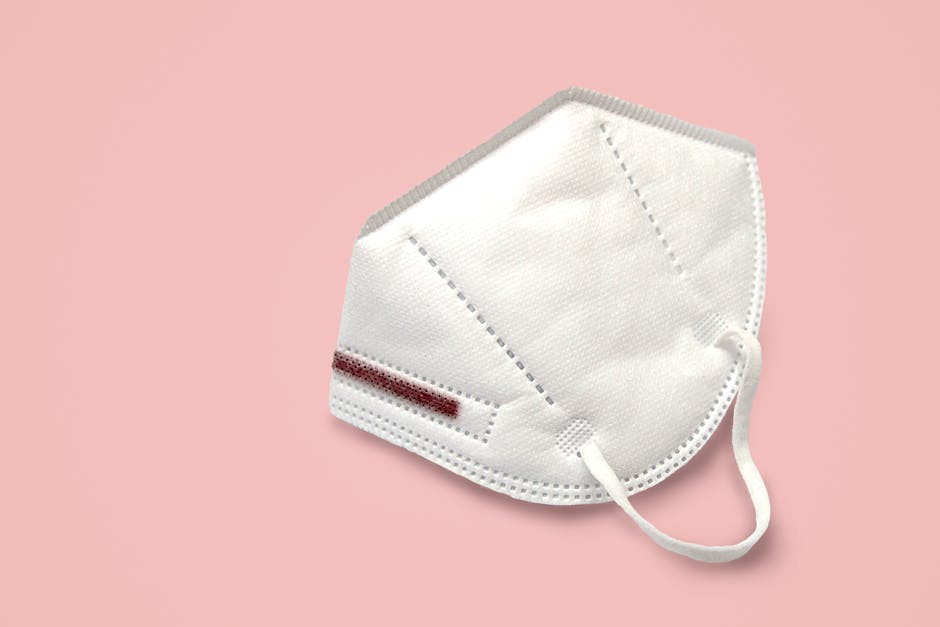Ear trouble? Ugh. It’s 2025, and while we’ve got self-driving cars and smart everything, figuring out if your ear is just acting weird or if it’s got a full-blown infection can still feel like a mystery. You know, that kinda dull ache that starts creeping in, or maybe your kid won’t stop pulling on their earlobe like it’s a bell. It’s a pain, literally. But how do you really know what’s going on in there? Is it serious? Or just some weird pressure thing? Let’s talk about it, because nobody wants a gnarly ear infection hanging around longer than it needs to.
What’s interesting is how often folks kinda shrug off ear discomfort. Like, “Oh, it’s probably just allergies,” or “Slept funny, I guess.” And sometimes, yeah, that’s exactly what it is. But sometimes, it’s not. An ear infection, or what doctors often call otitis media (that’s just a fancy way of saying middle ear inflammation), happens when that space behind your eardrum gets all filled up with fluid. Usually, it’s because of some bacteria or virus that snuck in there, often after a cold or flu. It’s a real bummer when it happens. Think of it like a tiny, swollen party happening where it shouldn’t.
That Annoying Ache: What Does Ear Infection Pain Even Feel Like?
So, pain. It’s probably the big red flag. For adults, an ear infection often starts with a specific kind of ear pain. It’s not usually like a headache that just happens to be near your ear. Nah. This pain, it often feels deep inside the ear. Sometimes it’s a constant, throbby ache. Like a metronome, but a really annoying, painful one. Other times, it’s super sharp, especially when you chew, yawn, or even just swallow. That pressure change, it just makes things worse, pushing on that inflamed eardrum. My experience? It can be like someone stuck a tiny balloon in my ear and inflated it way too much. Not fun.
And it’s not just the ear canal itself. Sometimes the pain goes a little behind your ear, or even down into your jaw. That’s because all those nerves are kinda connected. You might also notice a feeling of fullness, like your ear is plugged up with cotton or water from swimming, even if it’s dry as a bone. Your hearing? It’s probably gonna be muffled. Like the world suddenly sounds like you’re underwater, or like you’re listening to everything through a thick blanket. Conversations get tricky. TV sounds weird. It kinda sucks, actually.
Beyond the Ouch: Other Signs Your Ear’s in Trouble
Pain is just one piece of the puzzle. What else might you notice?
A fever, for starters, is a common one. Your body’s trying to fight off whatever germ is causing the problem, so your temperature can climb. It might be low-grade, just making you feel kinda crummy, or it could really spike. Night sweats? Yeah, sometimes.
Then there’s the drainage. If you see pus or some weird, clear fluid leaking out of your ear, especially if it smells kinda funky, that’s a major sign. This could mean your eardrum actually burst (don’t panic, they usually heal up fine). But seriously, if you see goo, get it checked out. That’s not normal ear stuff.
Balance issues or dizziness? Yep, that can happen too. Your inner ear helps with balance, and if there’s a lot of pressure or swelling, it can throw things off. You might feel a bit wobbly or unsteady. And, of course, general malaise. You just feel unwell. Tired. Grumpy. Like you’re fighting off a cold, but the main event is happening in your ear.
Little Humans, Big Troubles: Ear Infections in Kids and Babies
Okay, so diagnosing an ear infection in yourself is one thing. But with a little kid or a baby? That’s way tougher. They can’t just tell you, “My ear hurts, Mom!” You gotta play detective. And trust me, as a parent (or even just having been around little ones), you learn to read the signs.
Ear tugging or pulling: This is the classic. Baby reaching for their ear, pulling at it, rubbing it. They’re trying to tell you something. Not all ear tugging means an infection, sometimes it’s just them exploring, but if it’s constant, especially with other symptoms, it’s a clue.
Increased crying or irritability: When a baby is normally pretty chill but suddenly becomes inconsolable, especially at night or when lying down, an ear infection might be the culprit. Lying flat can increase pressure in the ear, making the pain worse. Think about when you get a bad headache and lying down feels terrible. Same idea.
Trouble sleeping: Pain, remember? It’s hard to sleep when your ear is throbbing. They might wake up frequently, cry, or just refuse to settle down.
Fever: Just like adults, kids can get a fever with an ear infection.
Fluid draining from the ear: Again, if you see any yucky stuff coming out, especially with a sudden decrease in fussiness (because the pressure released), get them to the doctor pronto.
Appetite loss or feeding difficulties: Sucking and swallowing can hurt when there’s an ear infection. Babies might pull away from the bottle or breast, or older kids might just not want to eat much.
Clumsiness or balance issues: For toddlers who are walking, you might notice they’re stumbling more than usual or seem a bit off balance.
It’s about looking at the whole picture. One or two of these might be nothing, but a bunch of them together? That’s when you start thinking “ear infection.”
When to Wave the White Flag (and See a Doctor)
Sometimes, a mild ear infection can clear up on its own. Especially if it’s viral. But seriously, don’t play doctor for too long. There are times when you absolutely, no question, need to see a real doctor.
If symptoms don’t get better in a day or two: Give it a little time, but if that ear pain is still kicking your butt after 24-48 hours, or if it’s getting worse, time to call the clinic.
Severe pain: If the pain is so bad it’s making you or your kid absolutely miserable, waking them up, making them cry uncontrollably, don’t wait.
High fever: A fever over 102.2°F (39°C), especially in an infant, needs immediate attention.
Ear drainage: We talked about this. Pus, blood, or any weird discharge. It means something’s happening in there that needs professional eyes.
New symptoms: If you suddenly start getting really dizzy, or if there’s swelling or redness behind the ear, that could signal a more serious complication. Get help fast.
Infants under 6 months: A baby that young with ear infection symptoms needs to be seen by a doctor. Their immune systems are still getting the hang of things.
Frequent infections: If you or your child keep getting ear infections, over and over, that’s also a good reason to chat with a doctor. They might need to look into underlying causes or different ways to manage it.
A Quick Distinction: Ear Infection vs. Swimmer’s Ear
Sometimes people mix these up, and it’s an easy mistake. Both involve ear pain, but they’re different beasts. An ear infection (otitis media) is usually in the middle ear, behind the eardrum. Swimmer’s ear (otitis externa) is an infection of the outer ear canal – that tube leading from the outside to your eardrum.
How to tell the difference? Swimmer’s ear often hurts more if you tug on the outer earlobe or if you push on that little cartilage flap in front of your ear opening. And it usually happens after swimming (duh!) or if you’ve been sticking things in your ear. The pain is more on the outside. Ear infections, the pain feels deeper, and you probably won’t have a pool story to go with it.
Taking Care of Those Ears: A Few Tips
While knowing if you have an ear infection is key, preventing them from showing up is even better. It’s not rocket science, but sometimes the simple stuff makes a difference.
Wash your hands: So many infections start with germs on our hands. Keep ‘em clean.
Avoid cigarette smoke: Seriously, secondhand smoke is a huge culprit for ear infections, especially in kids. It messes with the tiny tubes in the ear. Just don’t do it near people.
Get those flu shots: The flu can sometimes lead to ear infections. A simple shot can actually help you avoid a whole lot of ear pain down the line.
Breastfeed infants: For babies, breastfeeding for at least six months can actually help protect them from ear infections. Pretty cool, huh?
Manage allergies: If your allergies are constantly making your nose stuffy and draining, that can sometimes lead to ear issues. Keeping allergies under control might help.
Be smart about colds: A lot of ear infections start as a cold. So, rest up, drink fluids, and try to kick that cold fast.
Bottom line? Listen to your body. Or, if it’s your kid, listen to their cries and watch their little actions. Ear infections can be really uncomfortable, but knowing the signs means you can get help quicker and get back to feeling like yourself. Don’t just suffer through it, okay?
FAQs: How to Know if You Have an Ear Infection
Sure, here are some common questions folks ask when their ears are acting up:
What’s the absolute first sign of an ear infection I should look for?
Often, it’s a deep, dull, or sharp ache inside the ear. Sometimes, especially with kids, it might just be a sudden fussiness or crying, especially when they lie down. That ear tugging thing, too, that’s a classic. But usually, it’s pain.
Can an ear infection clear up on its own without medicine?
Sometimes, yeah, especially if it’s a mild viral infection. But honestly, it’s a gamble. If the pain is bad, or if you see drainage, or if it hangs around for more than a day or two, you really should get it checked out. No need to suffer for nothing.
Is it normal for my hearing to be muffled during an ear infection?
Totally normal. That fluid build-up behind your eardrum can make everything sound like it’s underwater or muffled. It’s like having earplugs in, basically. Your eardrum just can’t vibrate properly to send sounds through.
When should I definitely take my child to the doctor for ear pain?
If your child is under six months old, always see a doctor for ear infection symptoms. For older kids, if they have a high fever (over 102.2°F/39°C), severe pain, drainage from the ear, or if their symptoms aren’t getting better after 24-48 hours, it’s time for a doctor’s visit.
Can allergies cause ear pain that feels like an infection?
They totally can! Allergies can cause swelling and fluid buildup in the Eustachian tubes, which connect your middle ear to the back of your throat. This can create pressure and a feeling of fullness or even pain, mimicking an infection. That’s why it’s sometimes hard to tell the difference without a doctor looking in your ear.















